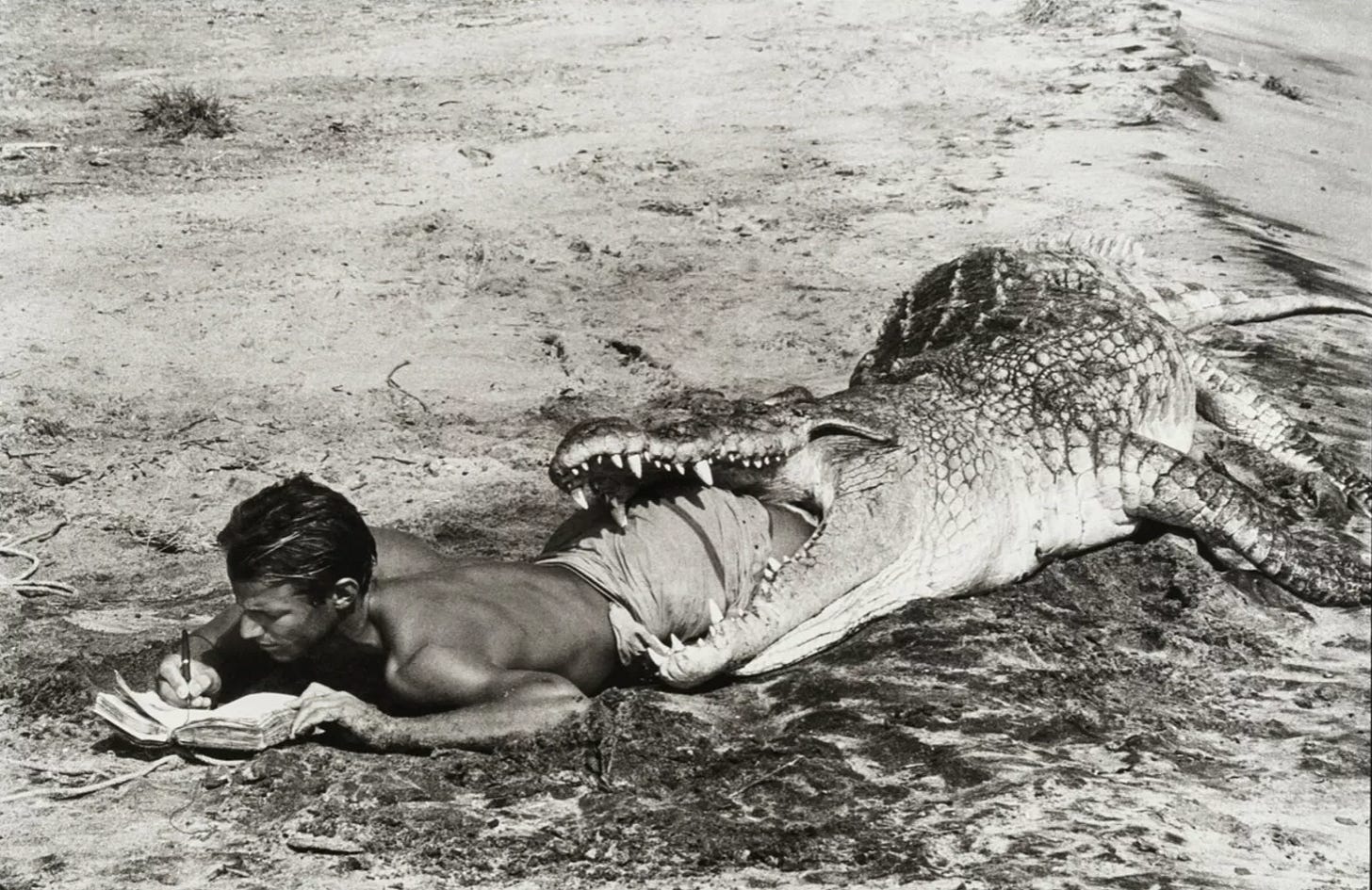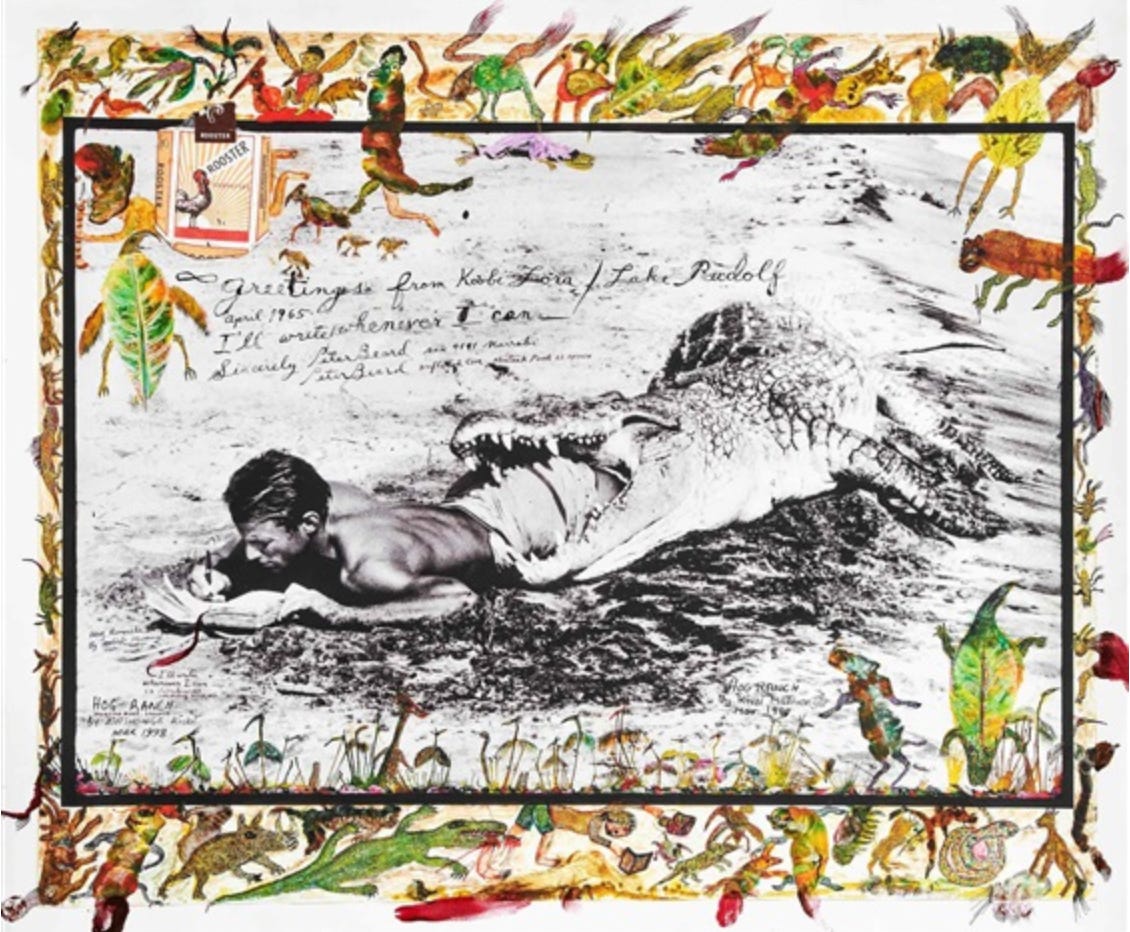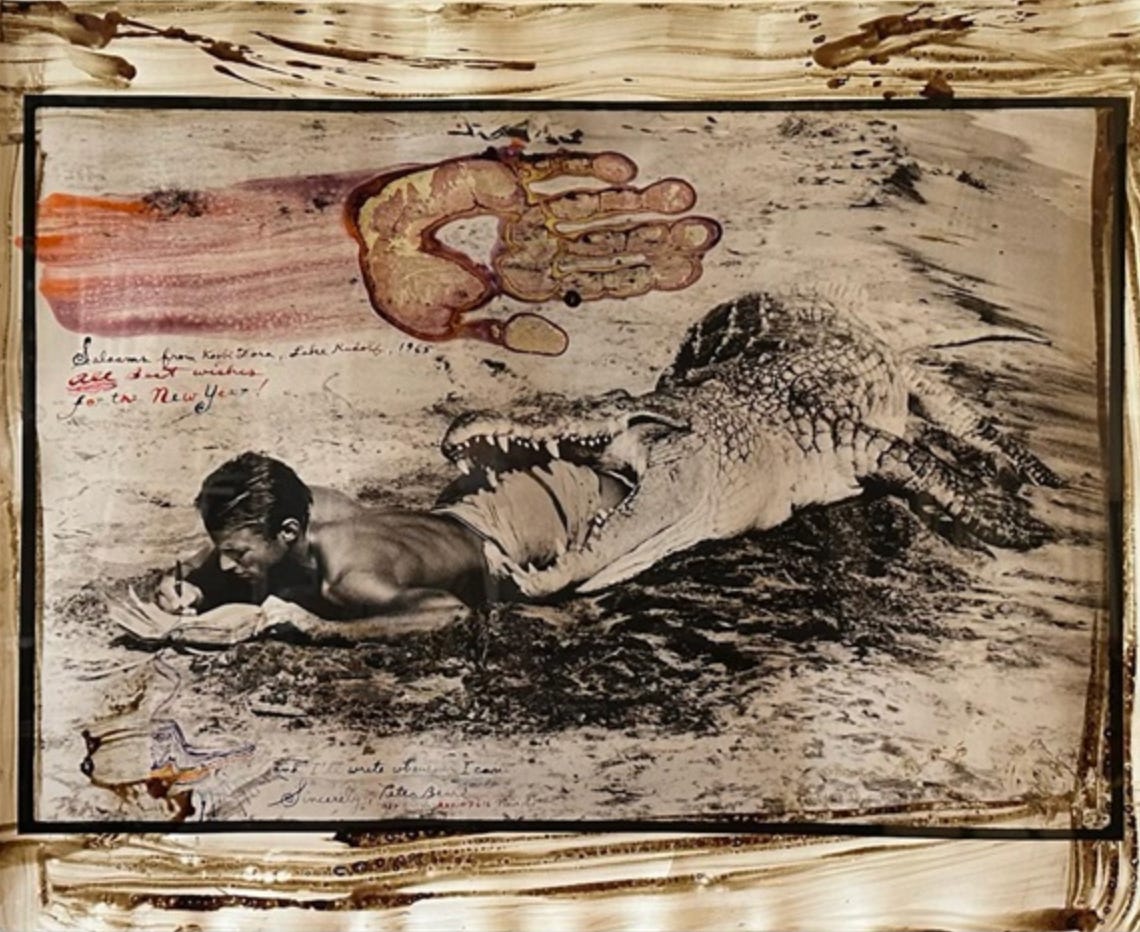As a life-long student of the art of photography, as a photographer, and as a modest collector I found Peter Beard’s connection to Karen Blixen irresistible.
Karen Blixen, aka Isak Dinesen - her nom-de-plume - was a Danish author, who lived only a few kilometers from where I was born. She is probably best known for her autobiographical book ‘Out of Africa’. She was still alive when I was a kid. She passed away in 1985. By 1991 her home, north of Copenhagen, had been turned into a museum. I was on vacation in Denmark, soon after the museum opened. There were a couple of references to Peter Beard at the museum and I started looking into the connection.
Peter Beard, born in New York in 1938, had visited Africa when he was 17 years old in 1955, and again in 1960. In 1961 when he went to Africa to settle in Kenya, he stopped in Denmark to visit Karen Blixen. He made her portrait during the visit. He eventually used a chunk of his substantial inheritance to acquire land next to the property, where Blixen so desperately had tried to grow coffee. He named it Hog Ranch.
As often happens to me, I went for a deeper dive. I started looking for and at the work of Peter Beard. I tracked down and bought his books and a few years later, by pure serendipity I managed to buy a few of his photographs. I will not bore you with a biography of Peter Beard, there is lots on-line about him. Suffice it to say that he was enamoured with Africa and was instrumental in raising awareness of the collision between man and Africa’s big game animals, chiefly elephants.
Peter Beard: “I Will Write When I Can, Lake Rudolf 1965”
He documented the starvation of huge numbers of elephants, poaching, and mis-management of the last remaining areas of Kenya where big game existed. He brought the plight of the large African animals to the attention of the President of the United States and the rest of the world. His first book ‘The End of the Game’ (first published in 1963) was in many respects a game-changer for conservation and awareness of the plight of wild animals in African.
Peter Beard: ‘The End of The Game’ First edition cover
In Kenya, it seems, Beard found himself at home. He photographed, lived an explorer’s life, shooting mostly with a camera, as opposed to a gun, and capturing wildlife and the people that co-exist with them. With a healthy trust fund in his back, he could afford to live a lifestyle that most can only dream about. Though coming from near New York royalty, he seems to have been more comfortable living in a tent and walking around bare foot in an old pair of shorts with a camera around his neck.
An explorer by nature, I think, he probably thought of himself as being born too late. Longing for a time when the Empire was in full bloom and Kenya an outpost. He probably identified with Dennis Finch-Hatton, Blixen’s true love and a central character in ‘Out of Africa’, as well as all the other characters that would work their way through the hills from trophy to trophy, occasionally coming back to Nairobi to drink at the Muthaiga Country Club and share stories of what they had felled with a single bullet, and what got away.
Beard’s photographs of wildlife made prior to the publishing of ‘The End of the Game’ is what he is known for. There were the odd commercial projects to follow, but he kept going back to what he became famous for, the animals. He reworked and reinterpreted and retouched his East Africa animal photographs in collages, diaries, in ways we have come to appreciate and love.
I met one of his family member’s - who shall remain nameless - who explained that there were two major tragedies in Peter Beard’s photographic life. The first when his house in Montauk burned down with a lot of his prints and negs lost forever. This event is well known and documented. The second episode is not so well known…. Beard was married for a short time to the model Cheryl Tiegs (1981-1983). She had given him many, many warnings, but Peter was hard to tame and got home at dawn one day to find a smouldering pile of negatives on the front lawn.
On the back of these two tragedies, an interesting theory of why Peter Beard took to making his colourful collages and adding to the beautiful photographs that he had made in the early 1960s slowly gained traction. Wagging tongues suggest Beard needed to camouflage the fact that his photographs were copy prints from old photographs, because the negatives no longer existed. You can as a purist of course lament this, but you have to give Beard credit for the creative and often beautiful way in which he presented his images.
Peter Beard used found objects, cut-outs from magazines, Polaroids, blood, sometimes from the butcher and sometimes his own, as well as hand prints and foot prints to illustrate his photographs. His collages are a wonder to behold. He would often draw little figures of animals and people along the edges. Small colourful images from his creative mind that had been making collages on the pages of his diaries for as long as he could remember.
I only met Peter Beard once. In Toronto. He was there for an opening of a gallery show and had been given free reign on the normally white walls. I was the last visitor through the door the day after the opening of the show, and he happened to still be there. I said ‘hi’ and asked if he would sign a book for me. Beard was as usual in bare feet and covered in indigo ink. His feet were somewhere between black and blue. The black from walking around barefoot, the blue from ink. He decorated surfaces normally white with prints of feet and hands and little scribbles. Funny figures that reminded me of a children’s drawings. Colourful and cartoon like. He not only signed a book for me, he decorated the first couple of pages with hand prints, a drawing of an alligator, a speech bubble by the fetus of the elephant that he had photographed that was on the title page. A personalized greeting to a guy he had no idea who was, whom he took the time to create a little work of art for. He was kind, friendly and very comfortable in his own skin. Notoriety and fame did not seem to change him. He was focused on you, and while he had done his little show countless times over the days and weeks of exhibitions he had had in various places, he took the time to make the experience personal for me. I will never forget that.
Some time in the early 90s, I bought an 11×14 print of ‘I will write when I can’ from Lake Rudolf 1965. It is the classic Beard photograph that we have all seen of him lying in the mouth of a huge crocodile writing in his diary, looking all serious. There is a hand drawn ink line – indigo of course – drawn to the open area below the crocodile, where he wrote the title, signed it and dated it. It is among my most treasured photographs. For this post, I am showing six variations of the ”I will write when I can” photograph. Amazing how different a single photograph can appear following the Peter Beard treatment.
Peter Beard was 82 years old, and suffering from dementia, when he walked away from his Long Island home in early April, 2020. He was found 16 days later in a forested area a mile from his front door. Those who knew him had been speculating and hoping – despite the odds – that he had gone on one last expedition. I would like to think that he did.
Rest in Peace, Peter Beard, King of the Elephants.










Interesting read, thank you for sharing
Beautiful, interesting story, well told. Thanks for sharing this, Søren.